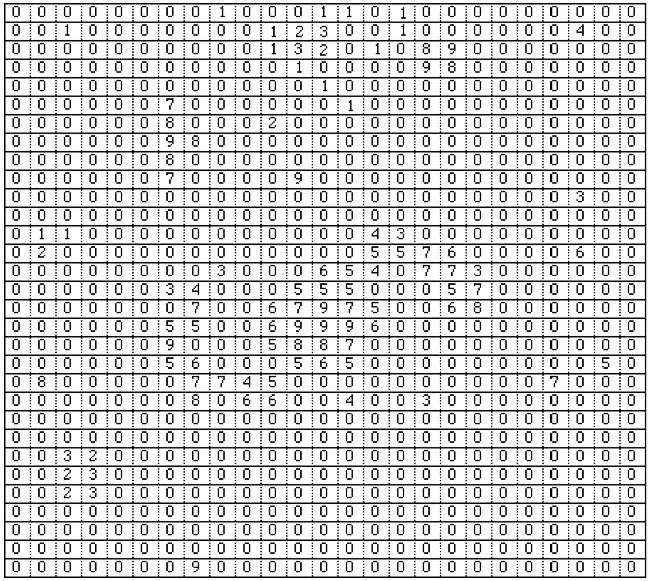AC2.2. CCD Image Color Coding
Materials
- copy of CCD simulation grid
- colored markers
- tape
The images from the HOU telescopes are generated using a CCD camera. This kind of camera uses an electronic chip rather than the photosensitive chemical films used by regular cameras. The electronic chip is divided into many small areas that collect and record light. Each pixel on the screen is then given a number based on the amount of light from that particular area of the CCD chip. The more light at a pixel, the larger the number. The computer assigns a shade of gray or a color (when using a false color palette) at each pixel to produce the image you view on the screen.
Below is a grid that simulates a CCD image with each pixel assigned a number between 0 and 9 to represent the amount of light at that pixel. Using only four different colored markers, develop a color coding scale for the ten different brightness values, 0 to 9. Indicate your color code in the Key at the bottom of the screen. Using your color scale, color each pixel with its proper color.
Tape your sheet on the wall with everyone else’s and compare the result of using different color scales to represent the same data.
Color Key | ||||
| Brightness Key |

Work
sheet
- What is different and what is the same as you look at the collection of grids?
- How does this activity relate to Min/Max settings in the image processing program?
- Did anyone simulate a log scale in his or her color coding scale? If so, what difference did it make? If not, what difference do you believe it would have made?
- Each coding scale can be thought of as a different color palette. Compare the grid images in terms of the pros and cons of using different palettes
- What is different and what is the same as you look at the collection of grids?


